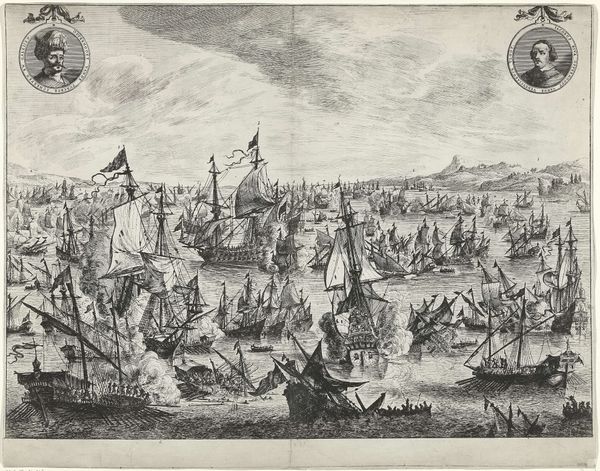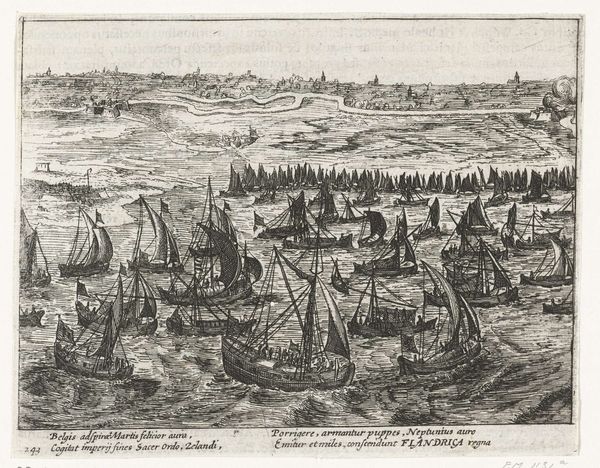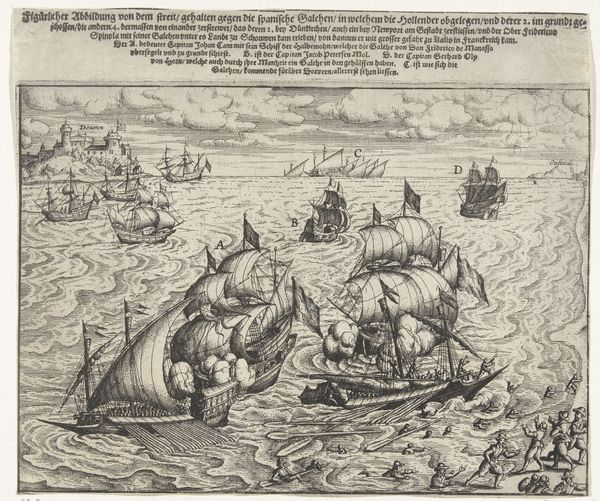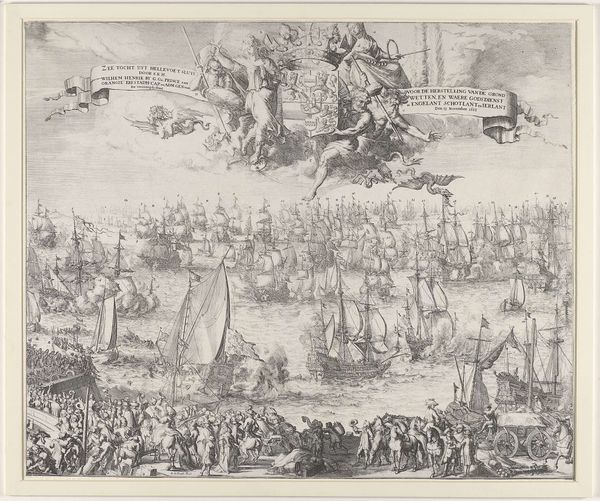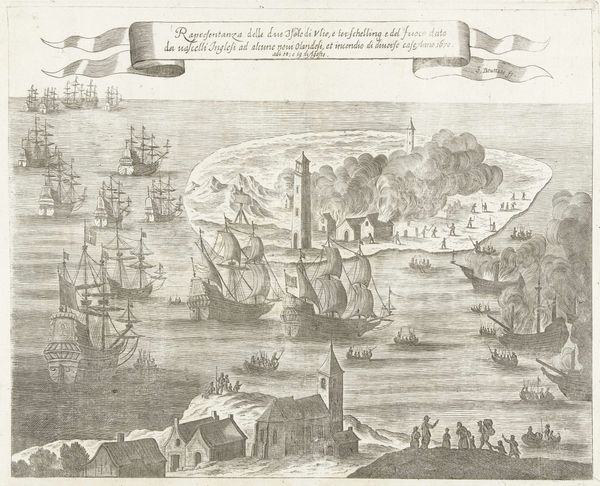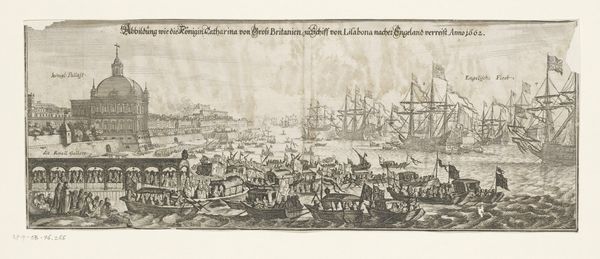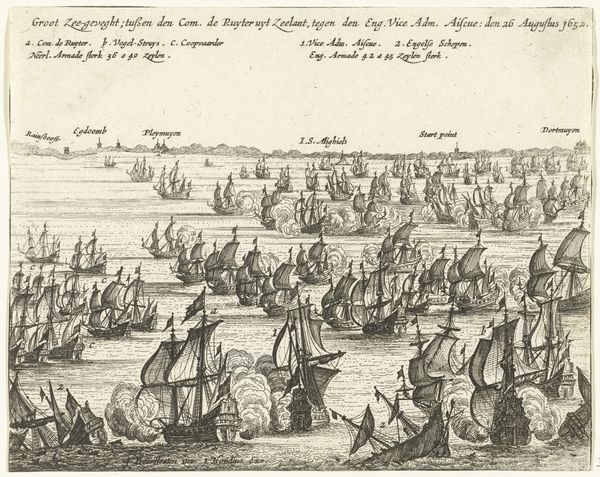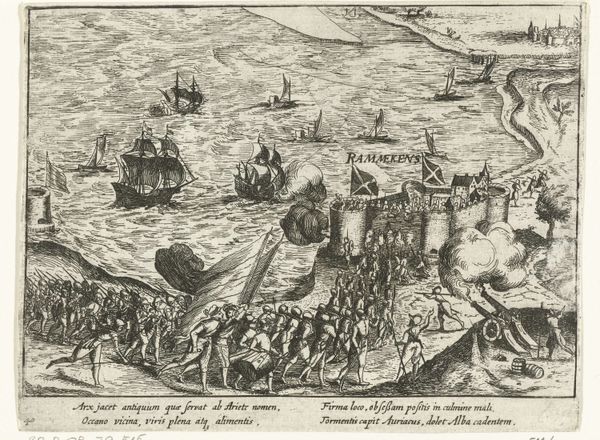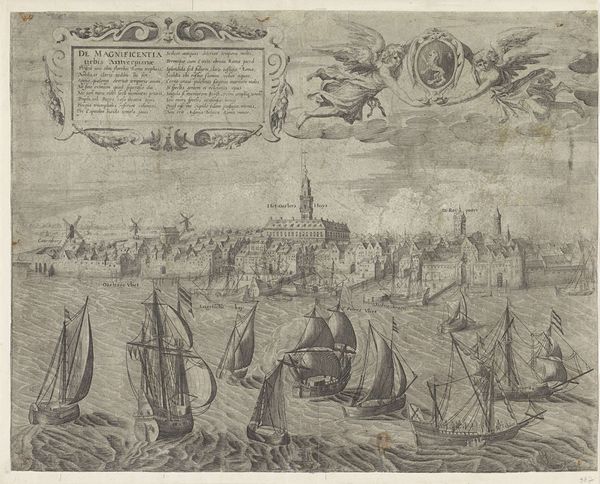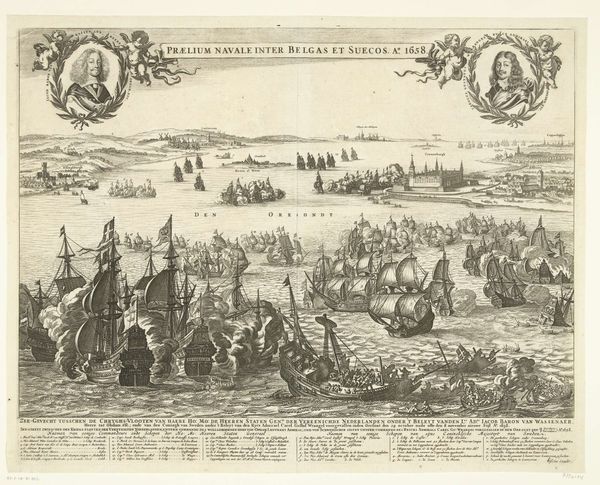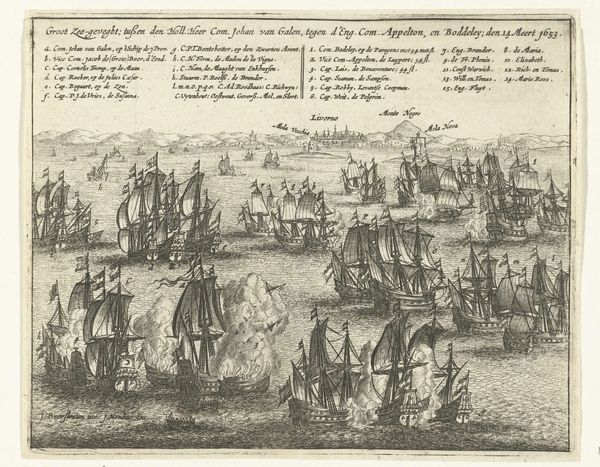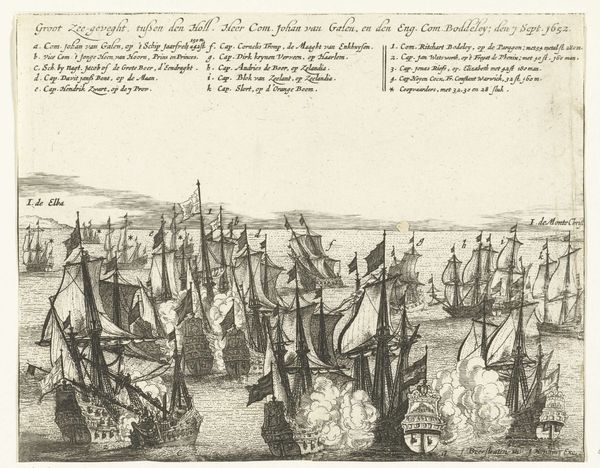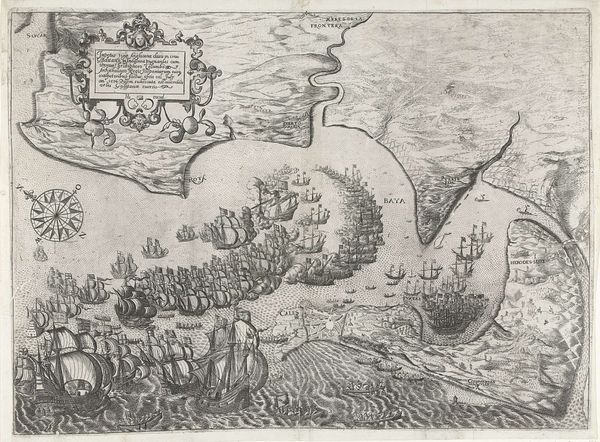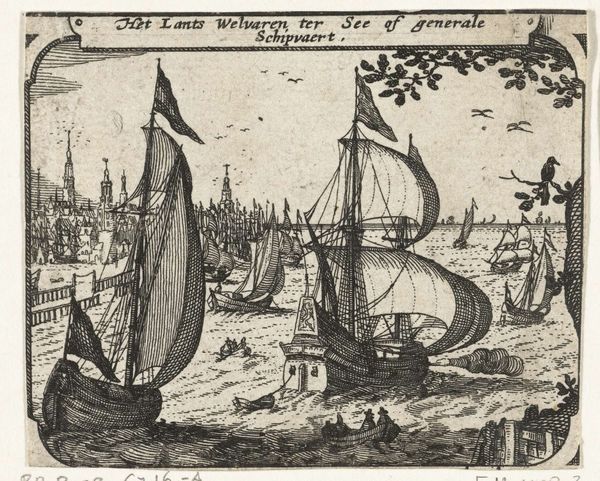
print, etching
#
baroque
# print
#
etching
#
landscape
#
history-painting
Dimensions: height 121 mm, width 145 mm
Copyright: Rijks Museum: Open Domain
Editor: This etching by Romeyn de Hooghe, titled "Bossu verslagen in de slag op de Zuiderzee, 1573," dating from around 1704 to 1706, depicts a fierce naval battle. It feels incredibly detailed, yet chaotic. How should we interpret a piece like this in the context of its time? Curator: It's a compelling depiction, isn't it? Given its date, well after the event itself, consider this not just as historical record but as historical *representation*. De Hooghe, working in the late Dutch Golden Age, reflects on that era’s foundational moments. What kind of national narrative do you think this print helps construct or reinforce? Editor: It definitely seems to be glorifying a Dutch victory. Seeing the defeated ships, the city skyline in the distance… it speaks to Dutch power. Was this sort of historical romanticization common at the time? Curator: Exactly. These prints, widely distributed, fostered a sense of national pride and legitimized the ruling powers. But also consider the economics. The print market was booming; images like this, readily consumed, reinforced existing beliefs while lining pockets. Do you notice any elements which might make the image more marketable? Editor: Well, the sheer drama of the battle, the detail... it's visually stimulating. It would make people want to look closer, to own a piece of that history. I guess it becomes less about pure historical accuracy and more about creating a desirable image. Curator: Precisely! De Hooghe isn't simply documenting, he's participating in a political and commercial landscape. So understanding the social forces in play really transforms our interpretation of the piece. Editor: I see now. It’s much more than just a picture of a battle; it’s an active participant in shaping national identity. It has me thinking differently about how historical events were understood, consumed, and even sold back then. Curator: Indeed, and it shows how artworks function not in isolation, but as part of broader conversations about power and identity. I am glad to have talked with you about it.
Comments
No comments
Be the first to comment and join the conversation on the ultimate creative platform.
